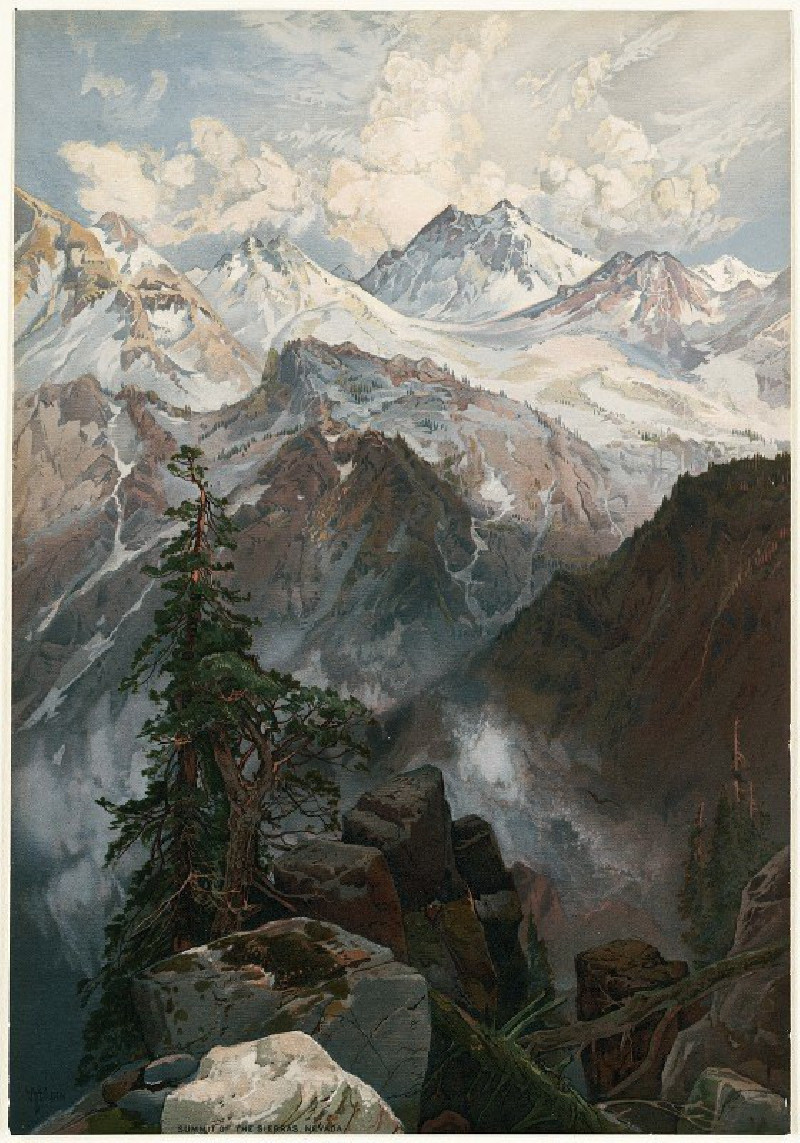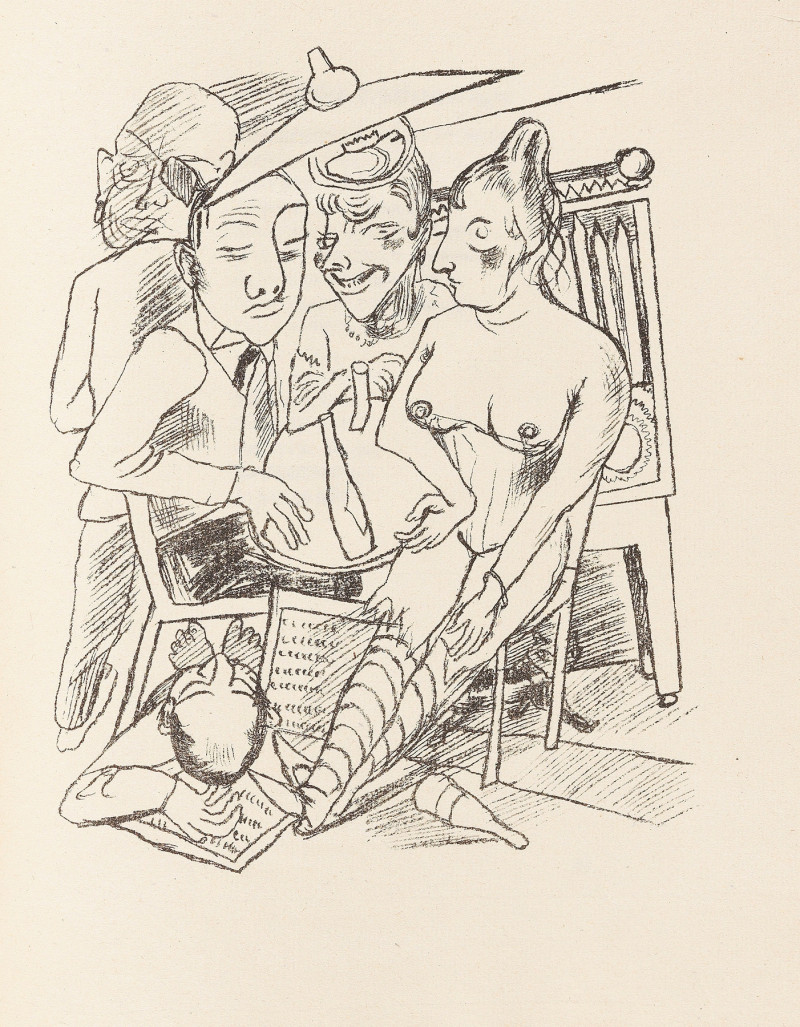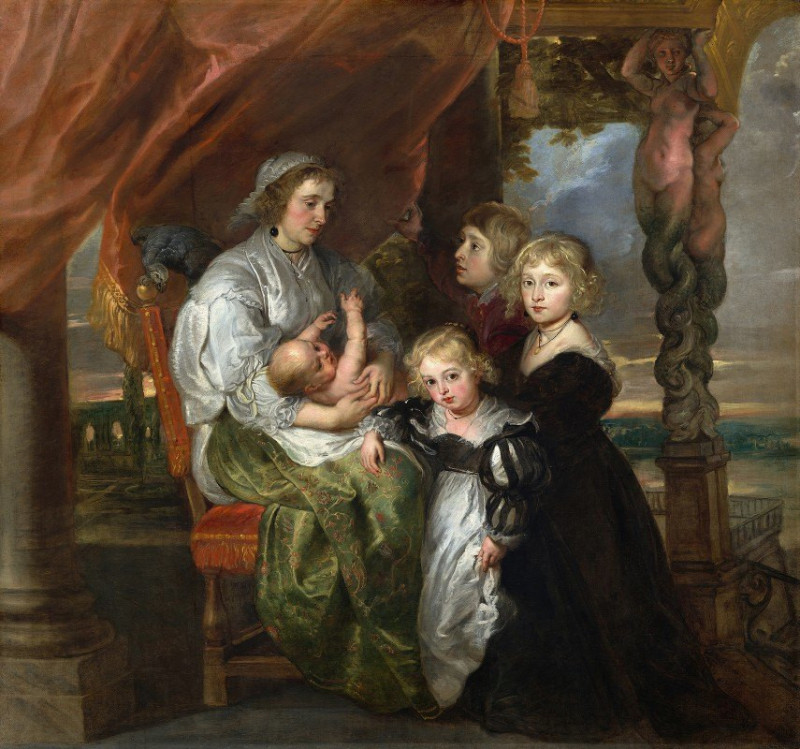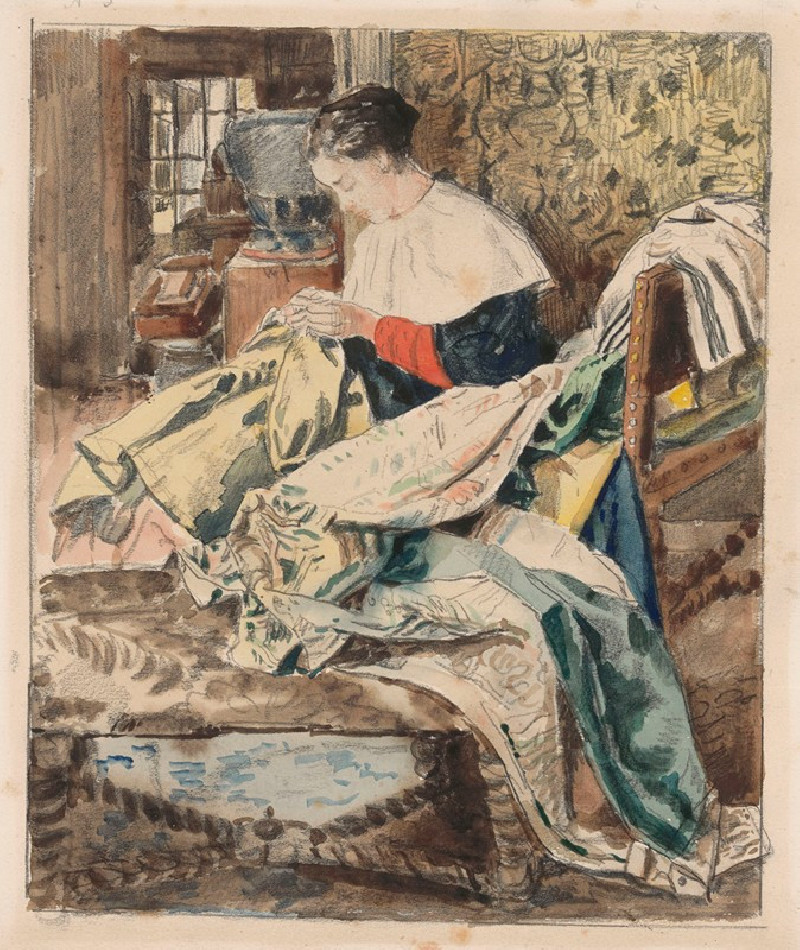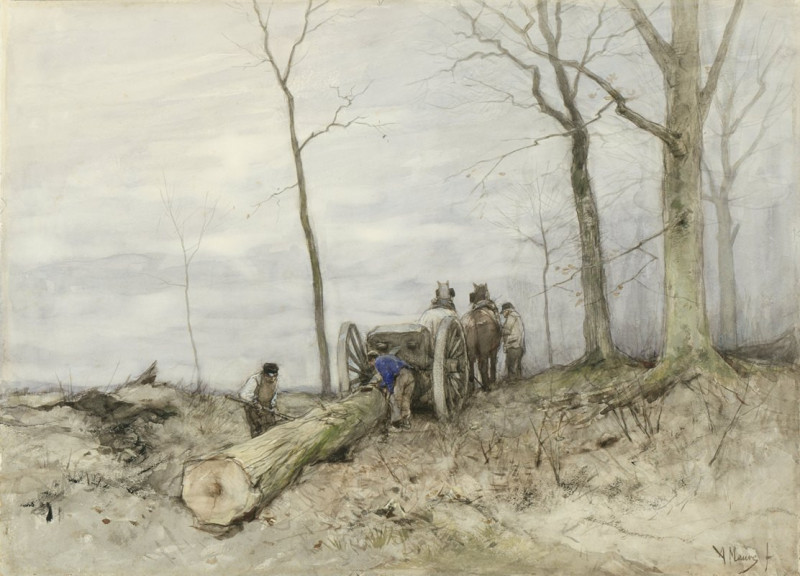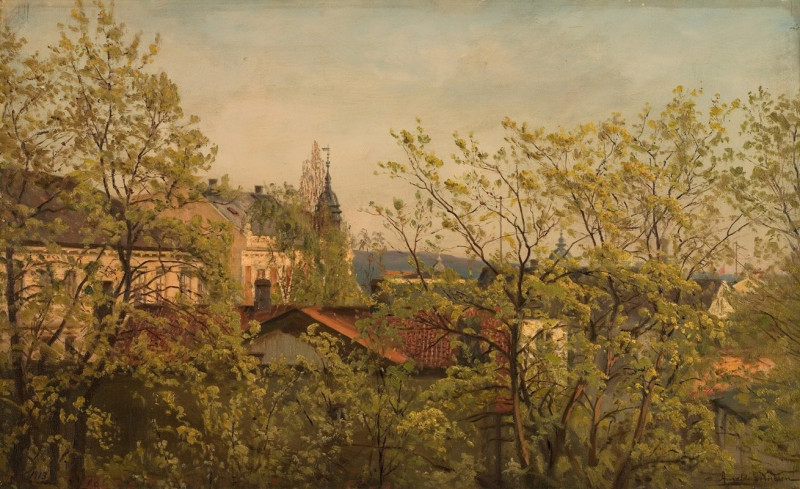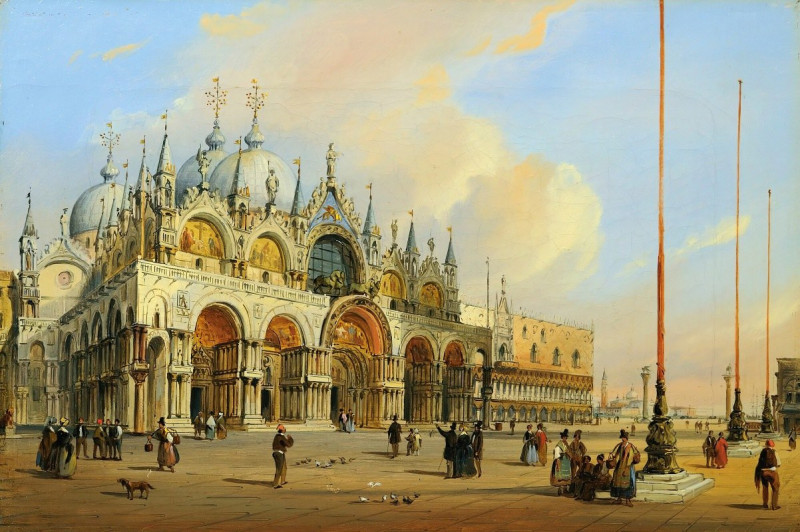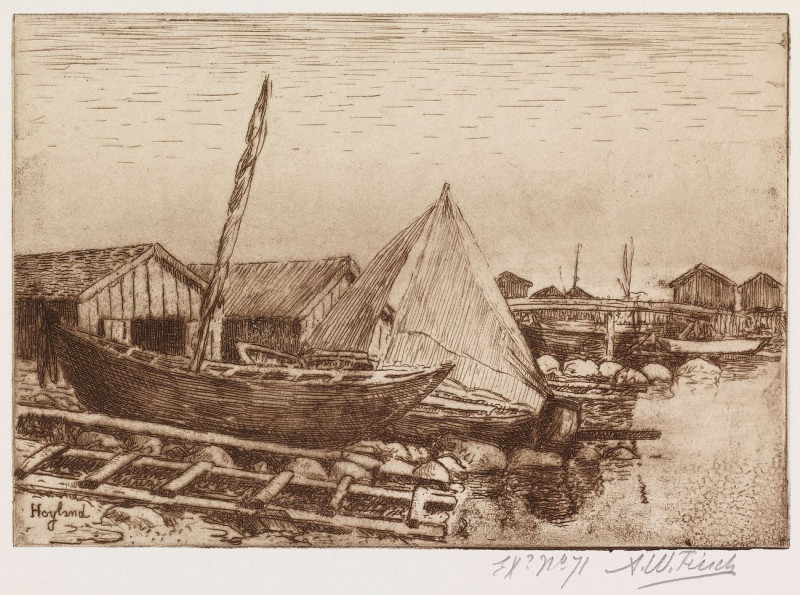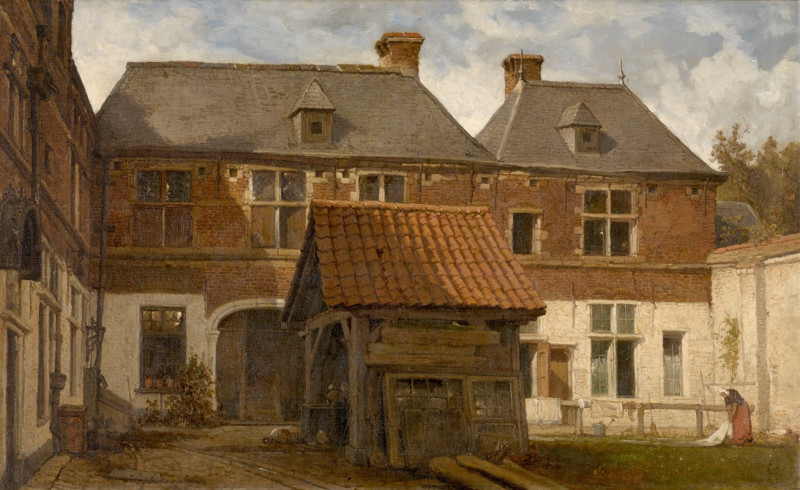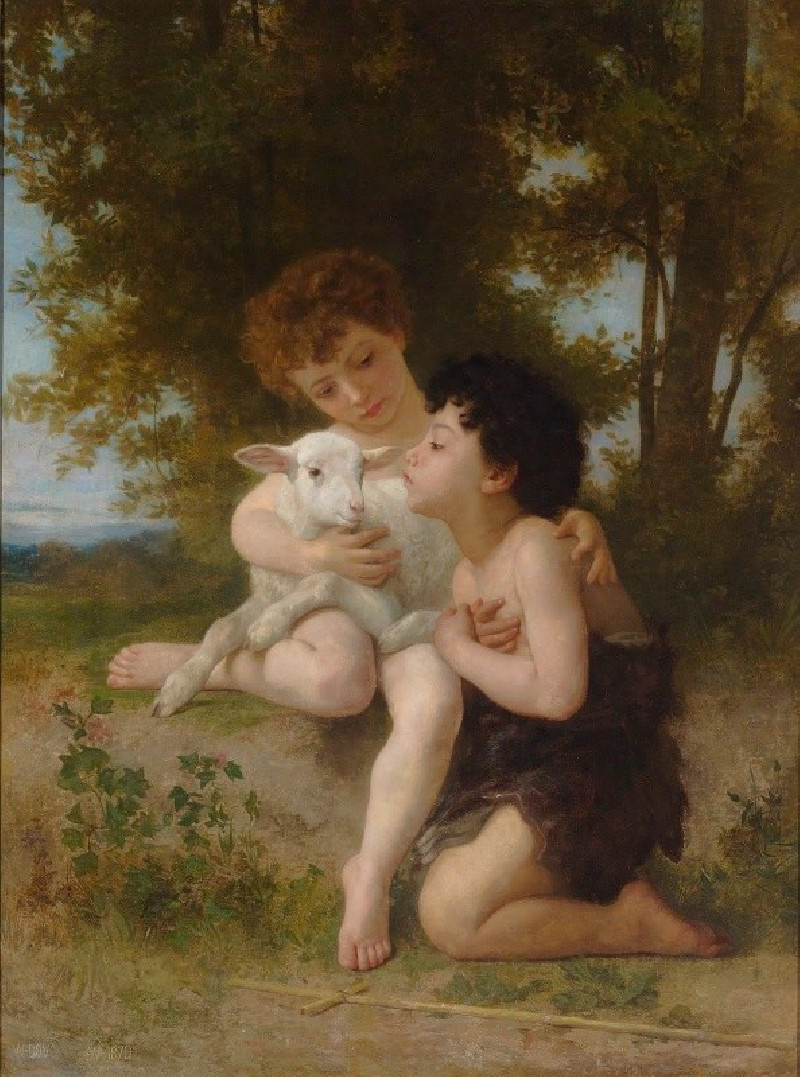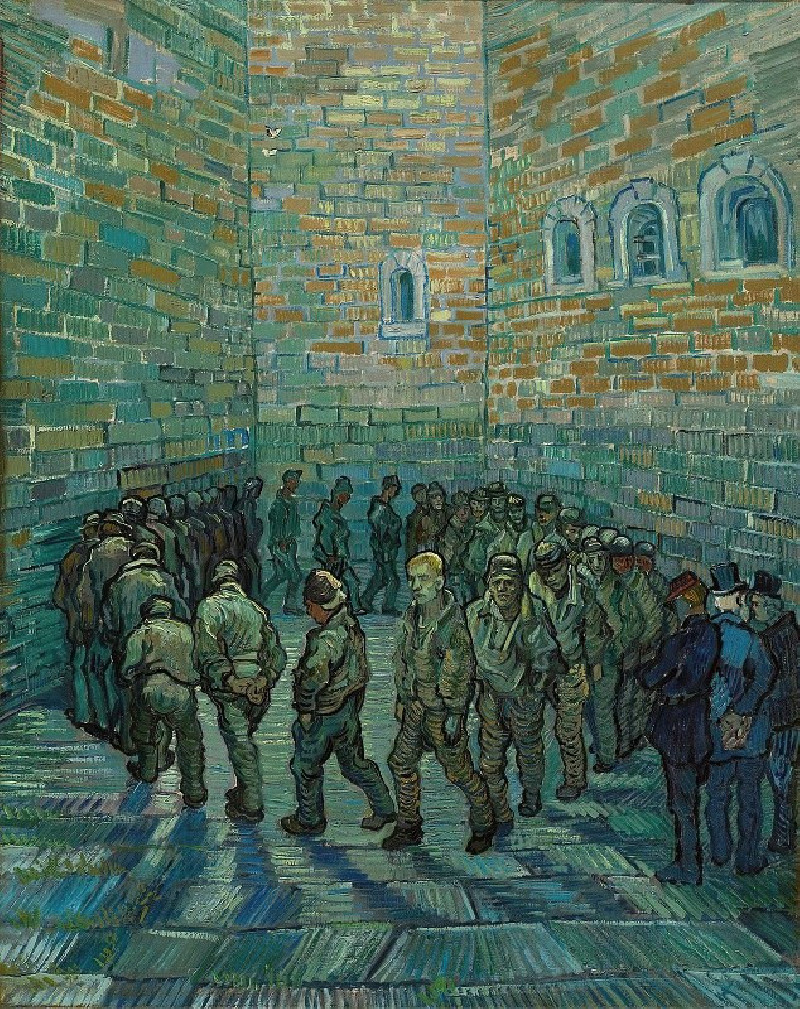Die Klosterser Berge (1923)
Technique: Giclée quality print
Recommended by our customers
More about this artwork
Ernst Ludwig Kirchner's painting "Die Klosterser Berge," created in 1923, is a vibrant depiction of the mountainous landscape around Klosters, Switzerland. This expressionistic artwork emphasizes bold and vivid colors, making the mountain scenery appear almost fantastical. The serene yet sharp intensity of the colors captures a dynamic interplay between nature and emotional expression.In the painting, Kirchner uses sharp lines and strong contrasts to depict the rugged terrain. The mountains tower in the background, cloaked in shades of purple and blue, suggesting their massive presence and the cool shadows they cast. In the foreground, a small wooden chalet, painted in bright oranges and reds, draws the eye as a warm, inviting refuge amid the cool tones of the lush greenery surrounding it.The sky above is streaked with clouds painted in strokes of white and pink, hinting both the setting sun and the wild, untamed energy of the alpine environment. This technique not only emphasizes the towering height of the mountains but also the overwhelming emotional impact of the natural world."Die Klosterser Berge" is a stunning example of Kirchner's expressionistic style, where he articulates his internal responses to the external world through exaggerated colors and forms, inviting viewers to feel the intense, raw beauty of the Swiss Alps as experienced through his eyes.
Delivery
Returns
Ernst Ludwig Kirchner (1880–1938) was one of the most important German Expressionist painters. He was a co-founder of Die Brücke, a group of German expressionist artists formed in Dresden in 1905. Die Brücke and Kirchner took inspiration from Vincent Van Gogh and Edvard Munch, as well as African and Oceanic art. They used woodblock printing as a medium to showcase their signature style: flat, unrealistic images with vivid colors. The recurring themes in Kirchner's artworks included exotic cultures, faraway landscapes, self-portraits, dancers and Berlin street life. His paintings and prints effectively portrayed non-European cultures despite the fact that he never traveled outside of Europe.
































